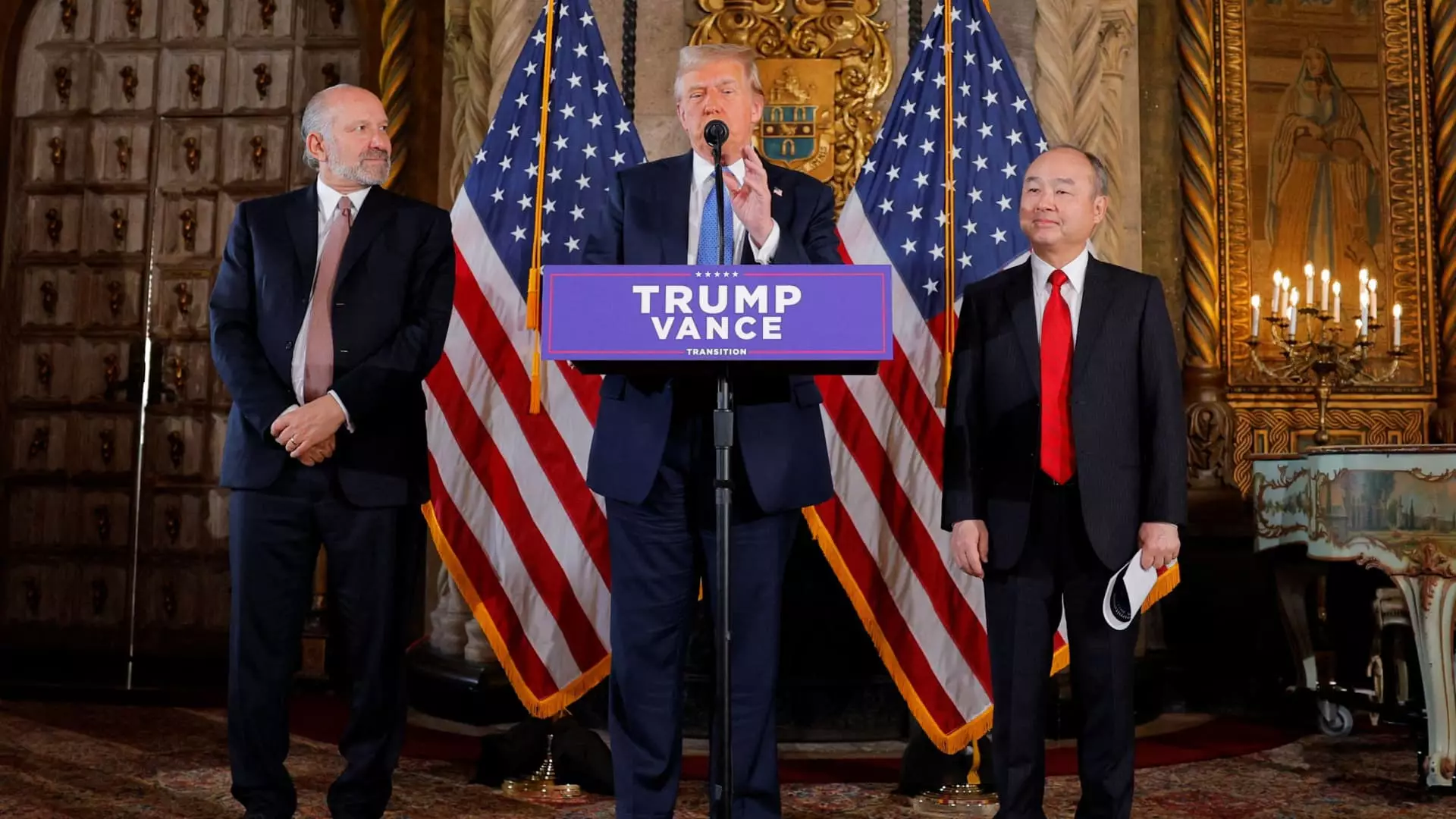In an ambitious announcement that signals a new wave of investment in American technology, SoftBank CEO Masayoshi Son revealed a monumental $100 billion investment plan during a visit with President-elect Donald Trump at Mar-a-Lago. This substantial financial commitment is not merely a transactional endeavor; it encapsulates a vision for the future of artificial intelligence and a dedication to fostering technological advancement in the United States.
Son’s promise extends to the creation of at least 100,000 jobs, with a sharp focus on artificial intelligence and the infrastructure necessary to support these emerging technologies. The planned investment underscores the growing importance of AI as a cornerstone of the economic landscape, as Son expressed his renewed confidence in the American economy under Trump’s presidency. This injection of funds is not just about economic numbers; it represents a strategic bet on the future of American innovation.
This isn’t the first time SoftBank has committed large sums to the U.S. economy. In a similar vein, during Trump’s first election win in 2016, SoftBank pledged $50 billion with the goal of generating 50,000 jobs, showcasing a pattern of financial commitment that raises expectations for measurable outcomes. The repetitive nature of these grand announcements, however, brings forth a critical analysis. Are these commitments genuinely transformative, or are they primarily political maneuvers designed to create a favorable public relations landscape?
The $100 billion figure raises crucial questions regarding funding sources. SoftBank’s vast portfolio includes the Vision Fund, capital projects, and a majority stake in chipmaker Arm Holdings, suggesting that a mix of existing capital and newly raised funds will be utilized for the American expansion. It is noteworthy that a portion of this funding may not be entirely fresh capital, as evidenced by SoftBank’s recent $1.5 billion investment in OpenAI. This brings us to a critical point: will these financial commitments result in tangible advancements in technology or will they merely circulate already existing funds?
While Trump touted the investment as a testament to confidence in the U.S. economy, skepticism is warranted. The dual nature of such announcements often raises alarms about their intention. Are these investments aligned with the interests of American workers, or are they more reflective of global market trends that prioritize automation and efficiencies over job creation?
As technology continues to shape the economy, SoftBank’s commitment is both a cause for optimism and an invitation for cautious scrutiny. The long-term impacts of this investment will depend significantly on execution and accountability. Stakeholders—including the tech sector, policymakers, and the workforce—must remain vigilant to ensure that these plans translate into real-world benefits.
Masayoshi Son’s $100 billion investment proposal is a crucial moment for the U.S. technology landscape. It could potentially herald significant job growth and drive advancements in artificial intelligence, but the realization of these promises will require careful oversight and execution. With the stakes so high, the tech community and the public alike must engage in a thorough dialogue about the implications of such investments on the future of work and innovation in America.

